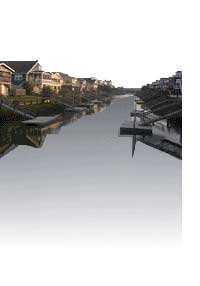|
by Fr. Jose
Femilou "Long" D. Gutay, OFM
The OFM Franciscans arrived in Manila on July 2, 1578. Upon their arrival, the first fifteen friars were temporarily housed
in the Augustinian convent in Intramuros. They finally moved to their own residence on August 1 of the same year. The next
day they blessed their new church and placed it under the protection of Our Lady of the Angels. After few months, they set off for the evangelization of the archipelago.
In Manila, they founded Santa Ana de Sapa, Paco, Pandacan, Sampaloc and
San Francisco del Monte. With the arrival of more friars, the Province of St. Gregory the Great was finally erected on November 15, 1586.
In the ensuing years the Spanish Franciscans labored energetically in many places in the country. Since their arrival until the end of the Spanish rule in 1898, the Franciscans were able to establish and/or
administer 207 towns/parishes in the following areas: Manila,
Bulacan, Rizal, Laguna, Quezon Province, Isabela, Cavite, Batangas, Bataan,
La Union, Ilocos Sur, Camarines Norte, Camarines Sur, Albay, Albay, Sorsogon, Burias Island, Marinduque, Mindoro,
Samar, and Leyte.
Aside from the founding of towns and parishes, the Franciscans also dedicated themselves to the establishment of
institutions of charity such as: the San Juan de Dios Hospital (1580), Naga Hospital of San Diego (1586), Hospital of the
Holy Waters in Los Baņos (1592), and San Lazaro Hospital – the first leprosarium in the Far East (1580). The Franciscans also excelled in the field of languages. Fray
Pedro de San Buenaventura, composed the first Spanish-Tagalog dictionary (Vocabulario
de la lengua Tagala) that was published in Pila, Laguna in 1613. The Bicolano-Spanish
dictionary printed in 1745 was authored by Fray Marcos Lisboa. The authorship of the first book printed in the Philippines in 1953, the Doctrina Christiana, was
attributed to Fray Juan de Plasencia. Fray Juan de Oliver wrote the first catechism
on the 10 commandments in Tagalog. The first water system in Manila and free loan-banks (Montes de Piedad) were established through the efforts of Fray Felix Huerta, OFM. They were also involved in the building of infrastructures such as roads, dams and bridges. Some Franciscans became bishops. Among them were Ignacio de Santibaņez, first archbishop of Manila (1595); Luis Maldonado, first bishop of Nueva Caceres in Naga (1595); and Martin Maria Alcocer, last Spanish
bishop of Cebu (1886).
By the year 1896 there were 481 Franciscans in the Philippines administering over 200 parishes. However, during the upheaval following the revolution
in 1898, many friars departed. By 1900 there were only 70 friars left. In 1905, the seat of the administration of the Province was transferred to Madrid, Spain. What was left was
a Provincial Commissariat established to oversee the remaining ministries of the Spanish friars. On July 16, 1931 a seminary was
opened in San Francisco del Monte, Quezon
City for Filipino candidates. In 1948 only 23 Spanish Franciscan remained in the Philippines.
In 1951, the Italian Franciscans from the Province of
St. Anthony in Venice opened a mission in Cagayan Valley. These were mostly composed of the friars expelled from China during the Communist takeover. In
1952, American friars from the Province of the Assumption of Pulaski arrived and took over some parishes in Samar upon the invitation of the Bishop of Calbayog. In 1956, another group of friars from the Province Sta.
Barbara, California, USA, came to work in the diocese of Dumaguete. In the same year, another batch of American friars
from the Province of St. John the Baptist in Cincinnati, Ohio, established their presence in Leyte and Biliran Island.
In 1962 the Our Lady of the Angels seminary was founded. OLAS was built through the joint efforts of the foundations
(Spanish, Italian and American), and one of its objectives was to develop the native Franciscan vocation and eventually establish
an indigenous Franciscan presence in the country.
The increasing number of Filipino friars and the decision of other members of the foundations to work in the country
led to the erection of the Vicariate of San Gregorio Magno on March 25, 1970. Thirteen years later, on January 25, 1983, the Province of San Pedro Bautista in the Philippines was inaugurated.
Today, the OFM’s are ministering in different parts of the country: in
Luzon (Sta. Ana, Casambalangan and Sta. Teresita in Cagayan Valley; Santuario de San Pedro Bautista Parish in Frisco, Q.C.;
Our Lady of the Angels Seminary in Novaliches; Our Lady of the Abandoned Parish in Sta. Ana, Manila; St. Anthony Shrine in
Sampaloc, Manila; Santuario de San Antonio Parish in Forbes Park, Makati; Juan de Plasencia Novitiate in Liliw, Laguna; in
the urban poor communities of the post-novitiate friars in Caloocan City, Talayan Riverside and Balingasa, Q.C.: and Poor
Clare Monastery Chaplaincy in Katipunan, Cubao, Q.C.); in the Visayas (St. Francis School, Allen, N. Samar; Christ the King
College, Calbayog City; Tucdao and Kawayan, Biliran Province; Palo, Leyte; San Vicente Ferrer Parish and St. Francis Vocation
Center in Cebu City, Franciscan Retreat Center in Minglanilla, Cebu; St. Francis College in Guihulngan, Negros Oriental; La
Libertad; and Dumaguete City); and in Mindanao (Balo-i, Lanao del Norte; Kidapawan City, North Cotabato; Josefina, Zamboanga
del Sur; and Look, Lamitan, Basilan Province). The friars are also involved in
other special ministries such as: the media apostolate, justice, peace and ecological initiatives, and the Tri-people (Muslim-Christian-Lumad)
dialogue in Mindanao. There are also friars of the Province who are working as missionaries
in Uganda, Sudan and Libya in
Africa; Papua New Guinea; Japan; China; Taiwan;
Burma and Sri Lanka |
